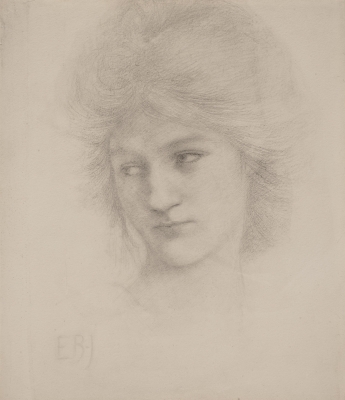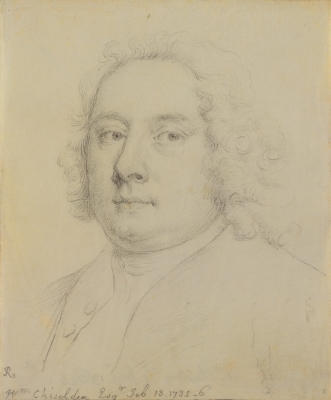This luminous watercolour was made by George Howard, 9th Earl of Carlisle during one of his periodic visits to Italy. Howard was a statesman, patron and painter of some distinction. Notable for his generous patronage of artists as diverse as Edward Burne-Jones, William Holman Hunt and Frederic, Lord Leighton, he was also a talented practitioner. A leading member of the Etruscans, a group of artists who worked in emulation of the Italian painter Giovanni Costa, Howard worked closely with Costa in Italy along with Matthew Ridley Corbett and William Blake Richmond. Howard’s best works are his landscapes of Italy and particularly the sequence of luminous watercolours, such as this, which are inflected with a Pre-Raphaelite intensity.
Howard was born into considerable wealth, a scion of a large landowning and politically powerful family, he was educated at Eton and Trinity College, Cambridge. Under no pressure to earn a living, he and his wife, Rosalind, travelled extensively. In the winter of 1865-66 the Howards were in Italy, looking at pictures and wherever possible meeting artists. In Rome they made friends with Giovanni Costa, who became the principal influence on Howard’s painting, and who in turn received professional support from Howard. He first explored the Roman Campagna with Costa in 1866; ten years later, again in company with Costa, he described his Roman routine: ‘Every day I work – very slowly though – Once a week I ride on the Campagna – which is more heavenly than anything that you can imagine. Yesterday I rode where the whole country looked like a Cumberland moor covered with asphodel instead of heather.’[1] Howard was a founder member of the Etruscans, a loose association of English, Italian, and American painters, all of whom were friends of Costa.
The present panoramic view shows St Peter’s Basilica and the Vatican viewed across marshland from the banks of the Tiber. This watercolour was painted during the 1870s on one of Howard’s trips to the Continent. Howard was in Rome in 1872 when he commissioned from Walter Crane a pair of views of the tombs of the poets Percy Bysshe Shelley and John Keats in the cimitero acattolico in Rome. The two watercolours, now in the Ashmolean Museum, Oxford, show how close Howard was in style to Crane, who despite serving an apprenticeship with William James Linton was an avowed follower of Ruskin and the Pre-Raphaelites. Crane’s highly particular, almost calligraphic use of watercolour and bodycolour to pick out individual blades of grass, reeds and flowers evidently informed Howard’s own technique. In the present long-format watercolour, Howard focusses as much attention on the vegetation in the foreground as he does on the mass of buildings that make up the Vatican.
The long horizontal format is one specifically associated with the work of Costa and the Etruscans. Costa did not paint in watercolour himself, and he prohibited the use of the medium. He believed that the handling of oil paint, particularly on the grain of a mahogany or cedar panel, was more expressive of than the landscape that careful draughtsmanship of contemporary watercolour technique. From other quarters, however, Howard received encouragement for his work as a watercolourist; for example his friend Stopford Brooke reported to him the enthusiastic remarks that Burne-Jones has made about his watercolour paintings. Howard exhibited both oils and watercolours of Italian landscape and architectural subjects in London. His watercolours, such as this, are meticulous and frequently more successful in evoking the Italian light. It is notable that another Etruscan, John Collingham Moore, made a long panoramic view of St Peter’s from the same position which he exhibited at the Darnley Gallery in London in 1866.[2]





